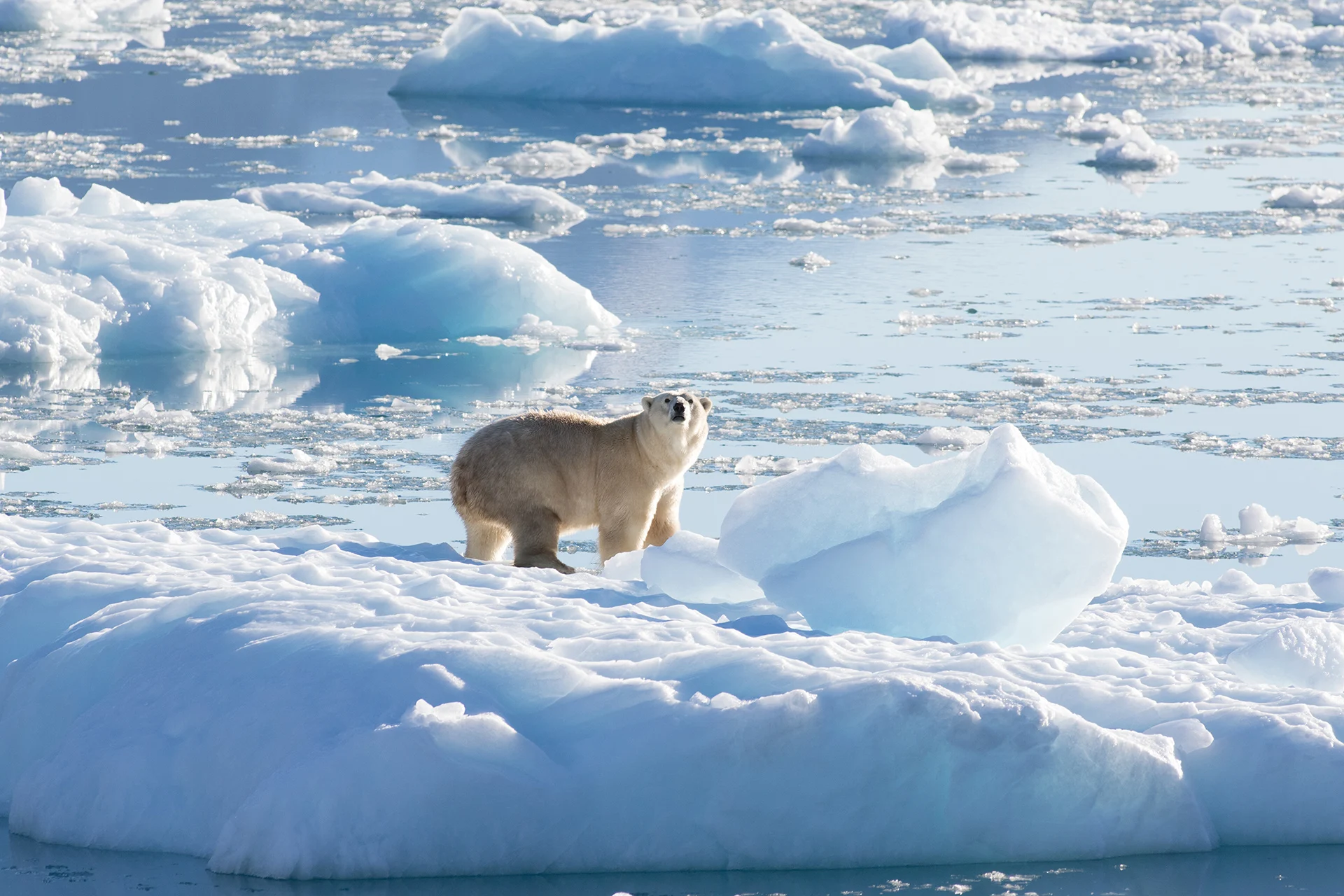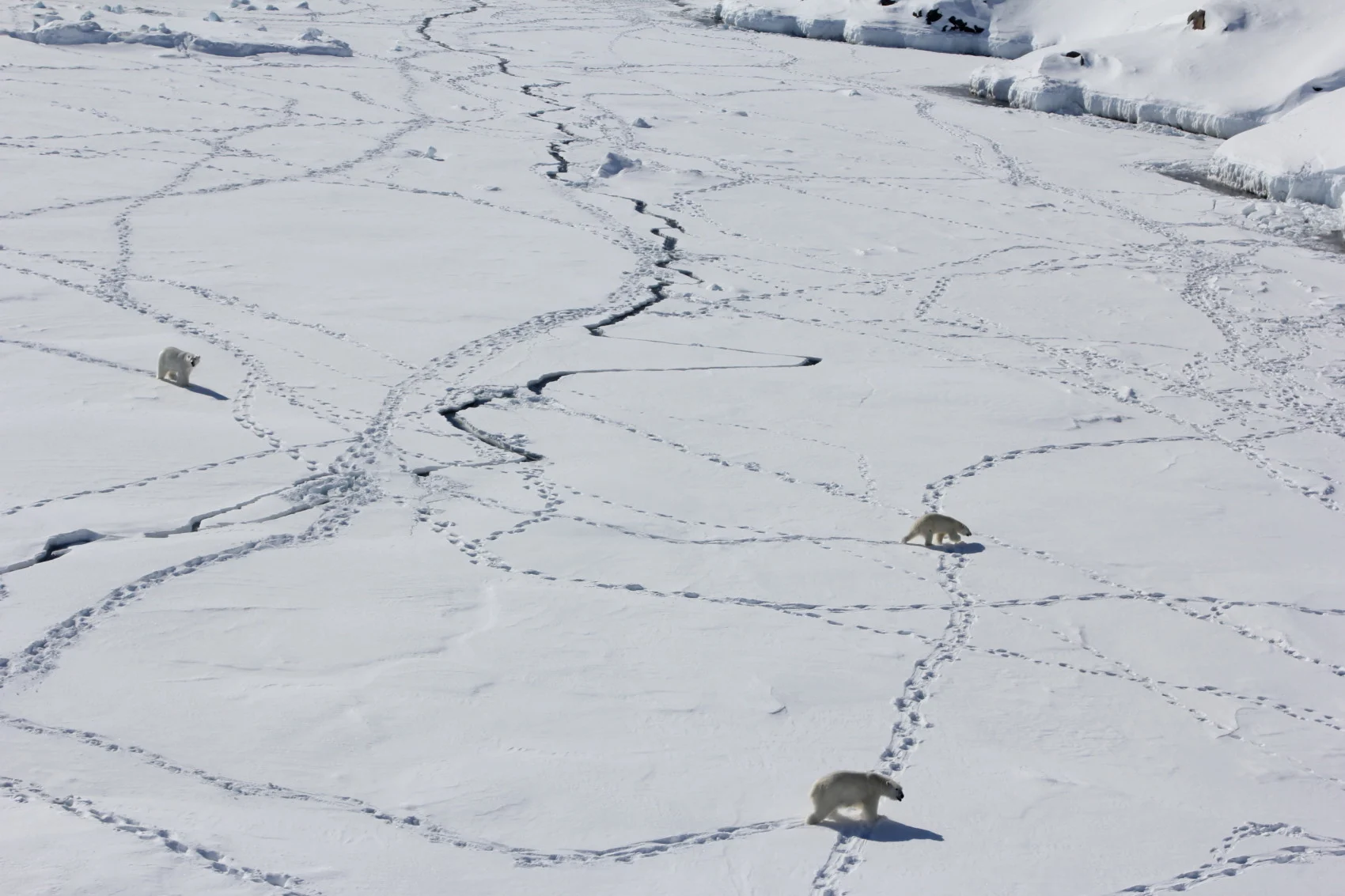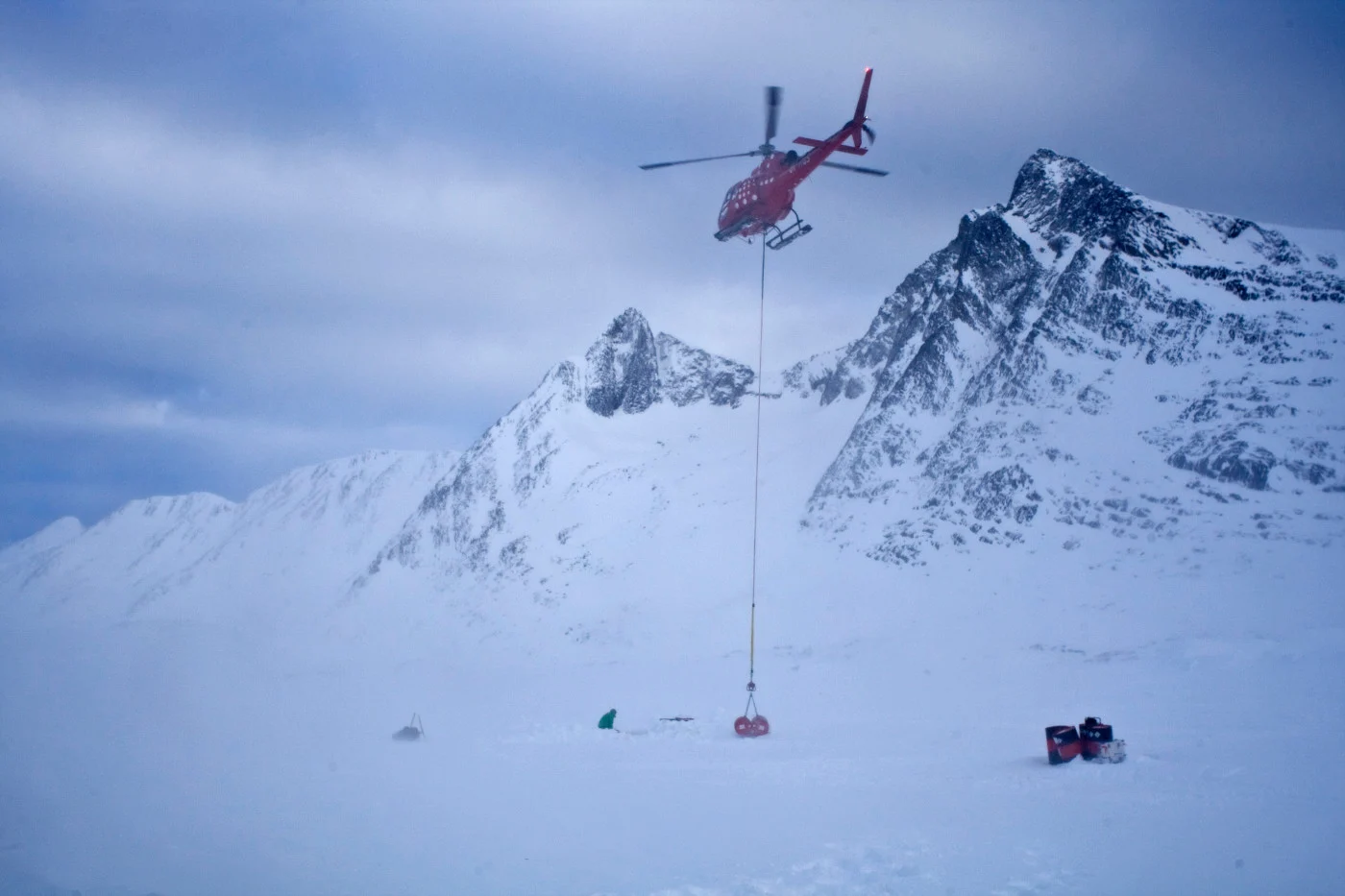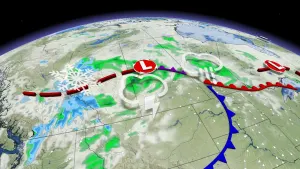
New subpopulation of polar bears discovered in remote part of Greenland
Estimates indicate that several hundred polar bears could be living in Southeast Greenland — an area that scientists say could be climate refugia.
A new subpopulation of several hundred polar bears has been discovered in an isolated region in Southeast Greenland.
The findings come from a study published in Science that states the polar bears are essentially boxed into a confined habitat due to sharp mountain peaks, a fast-flowing East Greenland coastal current, the Greenland Ice Sheet on the west, and the Denmark Strait to the east.
"We knew there were some bears in the area from historical records and Indigenous knowledge. We just didn't know how special they were," Kristin Laidre, lead author and polar scientist at the University of Washington, stated in a press release.

Three adult polar bears in Southeast Greenland in April 2015 using the sea ice during the limited time when it is available. (Kristin Laidre/ University of Washington)
Unpredictable weather and heavy snowfall have limited the amount of research conducted at this location. The researchers say that this subpopulation is the most genetically isolated on the planet and that they have been living separately from other polar bears for more than a hundred years.
“In a sense, these bears provide a glimpse into how Greenland’s bears may fare under future climate scenarios. The sea ice conditions in Southeast Greenland today resemble what’s predicted for Northeast Greenland by late this century,” stated Laidre.
Unlike other polar bears that hunt on sea ice year-round, Southeast Greenland bears spend most of the year hunting on freshwater ice chunks that were once part of the frozen continent.

A Southeast Greenland fjord is covered in fast ice, or sea ice that is connected to the coast, for about four months of the year, between February and late May. This photo was taken in April 2016. The open water seen on the horizon confines these polar bears, believed to be a 20th subpopulation, to a small region along the coast. (Kristin Laidre/ University of Washington)
Hunting on these ice chunks that originate near their habitat prevents the polar bears from having to swim challenging distances in the ocean, which conserves their energy. There are only four months in the year, from February to May, that Southeast Greenland bears hunt on sea ice due to their unique geographic location.
Sea ice in the Arctic, which is what roughly 26,000 polar bears rely on for hunting, is quickly disappearing as the North Pole warms. The study stated that glacier ice could become a “small-scale climate refugia,” which are places where some polar bears could survive as sea ice melts away.
Data collection and aerial surveys indicate that southeastern Greenland is expected to continue producing glacier ice in the future while the coastline remains relatively stable.

Fuel barrels were slung with a longline, shown here in March 2015, and deposited at strategic points so that the helicopter could reach polar bears in Southeast Greenland. The fieldwork required a four-hour daily helicopter commute from a Greenlandic coastal community or other bases to reach the bears’ habitat. (Fernando Ugarte/ Greenland Institute of Natural Resources)
The researchers stated that their findings are “hopeful” in terms of preserving the species because of their ability to adapt to glacier ice as an alternative to sea ice. However, the study does note that there are limited amounts of the glacial habitat, meaning that only a smaller population would be able to survive and there will likely be significant declines in Arctic polar bears.
The researchers say that long-term monitoring of this subpopulation is necessary to understand and predict how the bears will survive as Arctic sea ice continues to diminish.
The International Union for Conservation of Nature (IUCN) may choose to determine if the Southeast Greenland polar bears are officially a separate population, which would make it the 20th distinct group in the world.
Thumbnail credit: A Southeast Greenland polar bear on a glacier, or freshwater, ice at 61 degrees north in September 2016. (Thomas W. Johansen/ NASA Oceans Melting Greenland)











